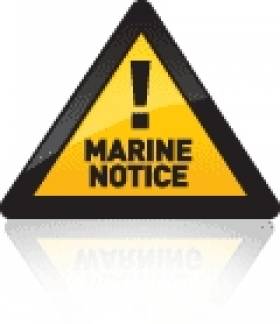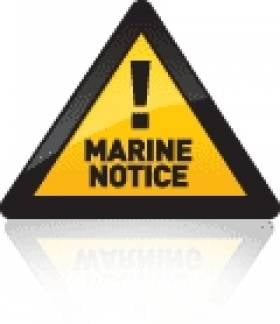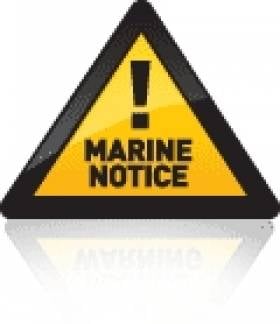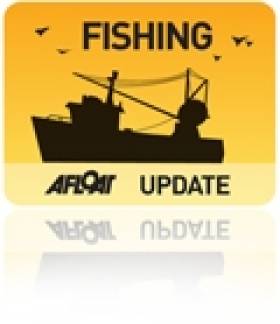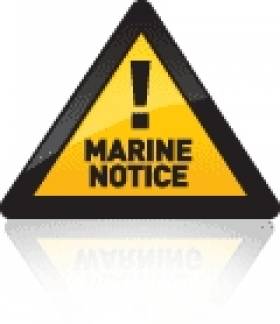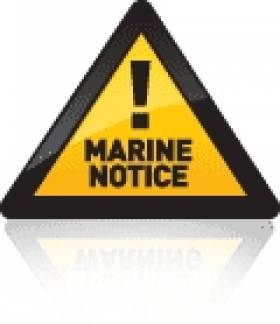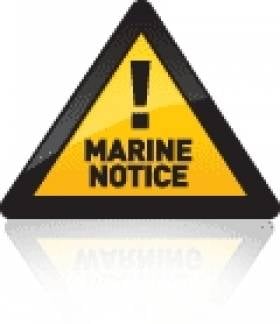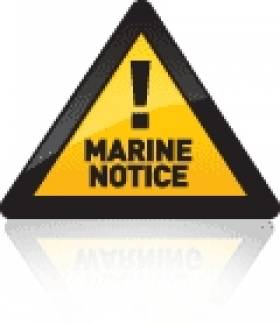Displaying items by tag: Marine Notice
#MarineNotice - The latest Marine Notice from the Department of Transport, Tourism and Sport (DTTAS) advises that construction works have been extended at North Harbour on Cape Clear Island in West Cork.
The works involve the construction of a slipway; replacement of the Bull's Nose structure incorporating a storm gate and an extension to the end of Duffy's Pier; excavation, dredging and reclamation works including the construction of an armoured embankment at the seaward side of the new Bull's Nose.
For safety reasons, mariners are requested to proceed slowly and with caution in the approach to the entrance to North Harbour and to give the works a wide berth. Wave-wash from vessels should be avoided. Divers will be deployed throughout the underwater works.
North Harbour will remain operational throughout the works, which are expected to be ongoing until the end of 2015. Details of the work area are included in Marine Notice No 2 of 2015, a PDF of which is available to read or download HERE.
#MarineNotice - The Department of Transport, Tourism and Sport (DTTAS) advises of the most recent list of approved training course providers under STCW 78.
These providers are approved to provide training for the various ancillary courses under the provisions of the Convention on Standards of Training, Certification and Watchkeeping for Seafarers 1978 (STCW 78), as amended (including the Manila Amendments of 2010).
Names, addresses and contact details for the various approved training course providers are detailed in the annex to Marine Notice No 1 of 2015, a PDF of which is available to read or download HERE.
It is important to note that this annex is an evolving document and is therefore subject to change. It is recommended that the website be used to see the most recent copy of this Marine Notice. Marine Notice No 33 of 2013 is hereby withdrawn.
Ebola Virus Disease (EVD) – Maritime Declarations of Health For Ships Docking at Irish Ports
#ebola – The Department of Transport, Tourism and Sport has been requested to publicise the attached (downloadable below as a word file) Health Service Executive letter regarding the submission of a Maritime Declaration of Health for ships docking at Irish ports, which have called at an Ebola EVD affected area or have crew/passengers that joined the vessel from such an area, or are suspected of having been in contact with the Ebola virus or an affected person within the past.
Marine Notice: Site Investigation Works At Rossaveal Fishery Harbour Centre
#MarineNotice - The latest Marine Notice from the Department of Transport, Tourism and Sport advises that site investigation works are being carried out at Rossaveal Fishery Harbour Centre on Galway Bay.
The work comprises drilling multiple boreholes at a series of locations, subject to minor variations, as listed in Marine Notice No 65 of 2014, which is available as a PDF to read or download HERE.
Work was expected to begin on Monday 24 November and is set to finish on or around Friday 12 December, weather permitting. A jack-up barge will be moved to the various borehole locations by a tug-boat, and will remain on site overnight during the operations.
All appropriate lights will be displayed by the barge at night. Radio warnings will be transmitted on VHF Channel 16 throughout the works.
Marine Notice: Recovery Of Persons From The Water
#WaterSafety - The Department of Transport, Tourism and Sport advises that, in accordance with SOLAS Chapter III Regulation 17-1, 'Recovery of persons from the water', cargo ships over 500 gross tonnage and all passenger ships on international voyages shall develop ship-specific plans and procedures for recovery of persons from the water.
The plans and procedures shall identify the equipment intended to be used for recovery purposes and measures to be taken to minimise the risk to shipboard personnel involved in recovery operations.
Ships constructed before 1 July 2014 shall comply with this requirement by the first periodical or renewal safety equipment survey of the ship to be carried out after 1 July 2014, whichever comes first.
The plans and procedures shall be developed taking into account MSC 1/Circ 1447 'Guidelines for the Development of Plans and Procedures for Recovery of Persons from the Water'; MSC 1/Circ 1182 'Guide to Recovery Techniques'; and MSC 1/Circ 1185/Rev 1 'Guide for Cold Water Survival'.
MSO Appointing Panel For Surveying Small Fishing Vessels
#Fishing - The Marine Survey Office (MSO) of the Department of Transport, Tourism and Sport wishes to appoint a panel of surveyors to conduct surveys of fishing vessels of less than 15m length overall, in accordance with a Code of Practice for such vessels.
To register your interest for this panel, and to obtain any additional information, see the posting on the eTenders Public Procurement website HERE.
Details of the request for applications are also included in the annex to Marine Notice No 61 of 2014, a PDF of which is available to read or download HERE. The closing date for completed applications is 14 November 2014.
Marine Notice: Site Investigation Works At Howth Fishery Harbour Centre
#MarineNotice - The Department of Transport, Tourism and Sport advises that site investigation works will commence at Howth Fishery Harbour Centre on or around today 29 October, weather permitting.
The works, involving geotechnical investigations within the western trawler basin, are being advanced by a site investigation crew working from a jack-up barge 11m × 6m in size, using engineering plant and machinery and work vessels.
For safety reasons, mariners are requested to proceed slowly and with caution in the approach to the western trawler basin of the Fishery Harbour Centre and to give the site investigation works a wide berth. Wave-wash from vessels should be avoided.
These works are expected to be ongoing until 19 November, weather permitting. For further information, contact the Howth Harbourmaster’s Office at 01 832 2252.
#MarineNotice - The latest Marine Notice from the Department of Transport, Tourism and Sport (DTTAS) advises of rock placement on the newly installed P3/P6 flowlines at the Corrib gas field, and remedial rock placement on the 20” gas pipeline and control umbilical.
The work will be undertaken at the Corrib field location and along the pipeline corridor to the landfall at Broadhaven Bay. The vessel to be used will be the Nordnes (Callsign PHOG).
Work on the P3 and P6 flowline rock placement will all take place within the 500m Safety Zone surrounding the Corrib subsea facilities. Meanwhile, the pipeline and umbilical remedial rock placement will be undertaken from the Corrib offshore field location to landfall at Glengad, Co Mayo.
The P3/P6 rock placement works will commence tomorrow, Sunday 19 October at the Corrib Field. Following that, the remedial rock placement will be undertaken on the pipeline and umbilical. The work will be completed by early November 2014.
Full details of co-ordinates for the relevant work areas are included in Marine Notice No 59 of 2014, a PDF of which is available to read or download HERE.
Marine Notice: Statutory Radio Surveys On Irish Sea-Going Vessels
#MarineNotice - The latest Marine Notice from the Department of Transport, Tourism and Sport (DTTAS) advises that it has established a panel of authorised surveyors to conduct statutory radio surveys on Irish sea-going vessels, including fishing vessels.
This panel is established from 1 October 2014 till 1 October 2017. Owners of vessels in the following categories requiring a periodical/annual radio survey should contact a panel radio surveyor to arrange these surveys:
• Irish fishing vessels of 15 metres length overall or more,
• Irish domestic trading passenger ships of Classes B, C, D, II(A), III, and VI,
• Irish domestic trading cargo vessels of 300GT or more, but less than 500GT.
On completion of such surveys, the panel surveyors will inform the Marine Survey Office (MSO) with regard to the issue of any required statutory certificate to the vessel.
In general, from 1 January 2015 the MSO will not issue statutory certificates to vessels which have not completed the required statutory radio survey. Owners of vessels requiring an 'initial' radio survey should contact the MSO.
Operators of vessels where the statutory certificates are issued by a Recognised Organisation on behalf of the DTTAS should continue to utilise the services of the Recognised Organisation for the completion of these statutory radio surveys.
Contact details for the panel of surveyors are included in the annex to Marine Notice No 58 of 2014, a PDF of which is available to read or download HERE.
Marine Notice: Corrib Gas Field Baseline Environmental Survey & Post Well Monitoring Survey
#MarineNotice - The latest Marine Notice from the Department of Transport, Tourism and Sport (DTTAS) advises that an environmental survey will take place in the vicinity of the Corrib Gas Field manifold and the Corrib treated surface water outfall diffuser.
These works, which include a post-well environmental survey conducted in the area of the 18/20-5(P6) well, were scheduled to commence by today (Friday 26 September) and are expected to last about a week, weather permitting. The vessel to be used is the Granuaile (Callsign EIPT).
Water and sediments samples will be collected from a series of locations adjacent to the Corrib field (SW3) and the water outfall diffuser (SW1) using a grab sampler. All locations at SW3 are within a 2.5km radius of the manifold.
With the exception of a sample control site located approximately 10km to the south-west, all locations at SW1 are within 4km of the diffuser. Cameras mounted on ROVs will take visual images of the seabed at each sample location.
Details of the relevant co-ordinates are included in Marine Notice No 57 of 2014, a PDF of which is available to read or download HERE.



























